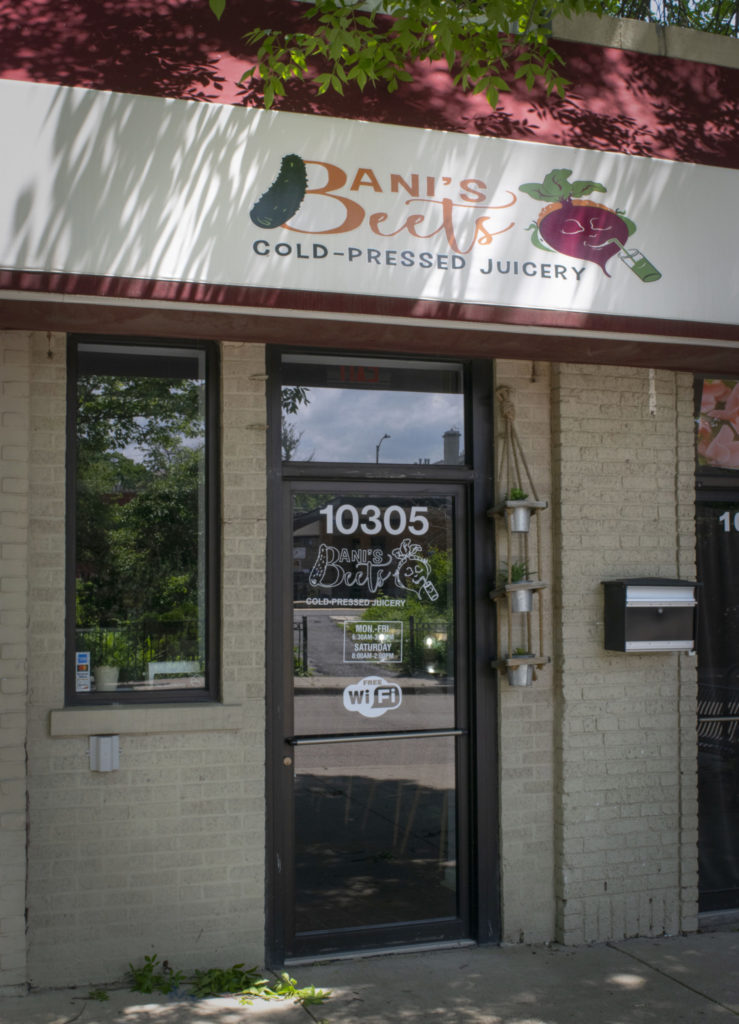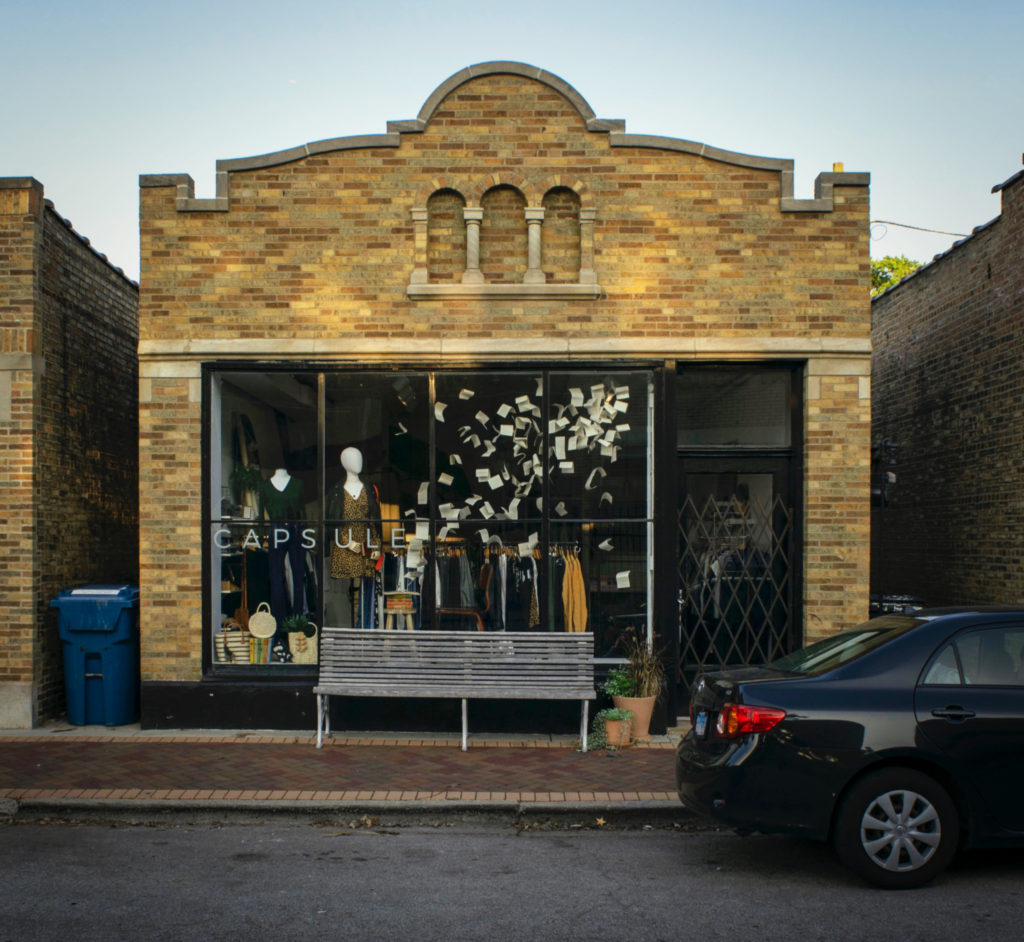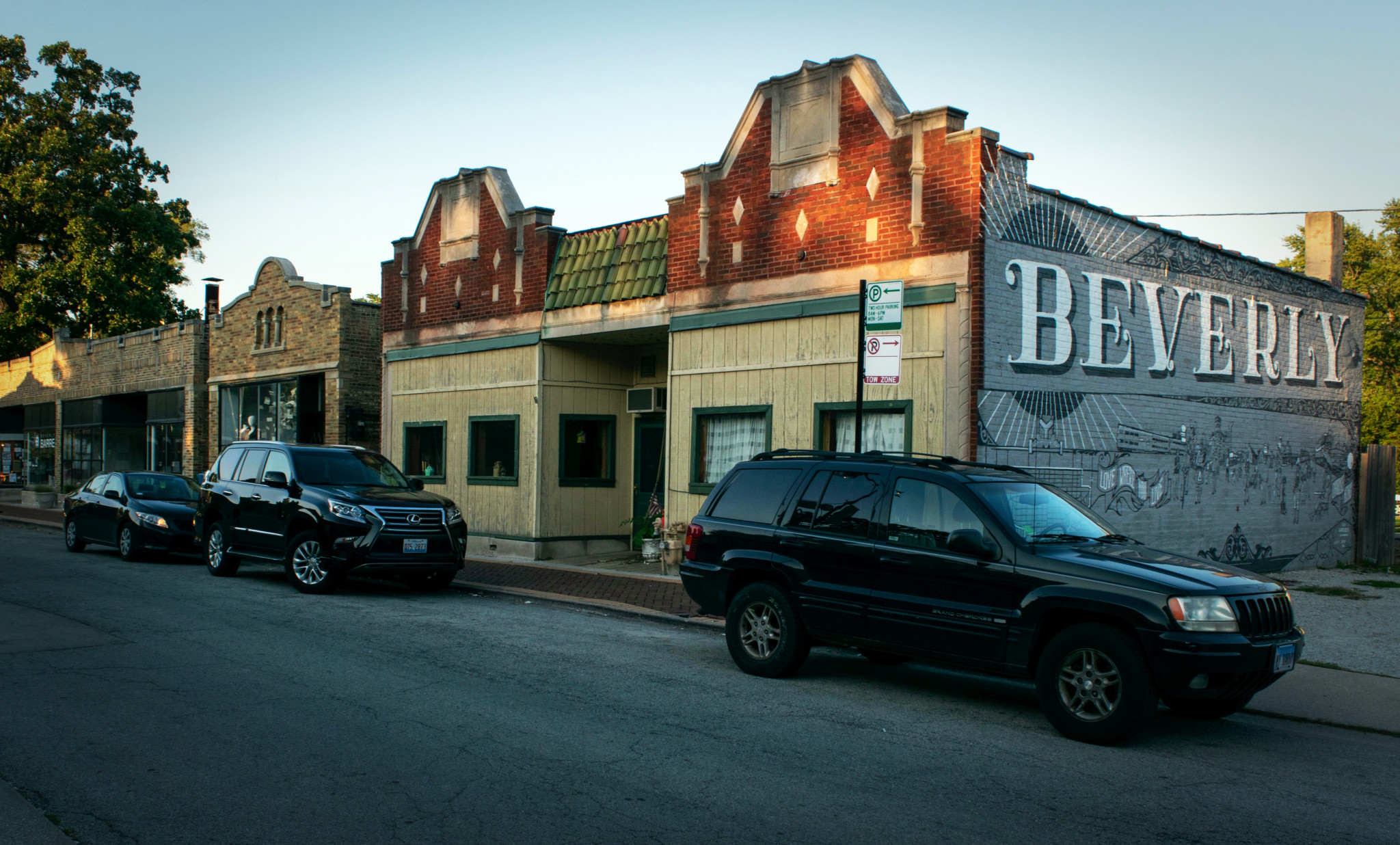In October 2018, the 103rd Street Metra station became the last of six historic train stations in Beverly to close its ticket office window. To some in the area, watching the stations close may have been a disappointment—especially after Metra spent at least $48 million in renovations in the last decade. But to nearby residents Nate and Sonia Hollister, one of the ticket window closings presented an opportunity in disguise. Two Mile Coffee Bar, co-owned by the Hollisters and Gretta and Patrick Dertinger, opened for business inside of the 95th Street train station on April 20—more than three years after the ticket window there closed.
“[Nate] could see it with his architect brain; other people could not,” Sonia said. “He saw this space that could be transformed into…something that we felt like the community needed: a coffee shop where people could get high quality coffee and also have the space to just have a community, [for] fellowship.”
Sonia expressed hope for Two Mile to serve as a kind of catalyst to transform 95th Street into a “destination strip” instead of the car-heavy thoroughfare it is now. Beyond 95th Street, many stakeholders in the area share the Hollisters’ desire to cultivate neighborhood corridors into focal points for pedestrian-friendly experiences and gatherings. Small businesses sprouting around the train stations are finding creative ways to bring the area’s business corridors to life. The benefits of these efforts, however, seem tightly constricted to within the neighborhood’s bounds.
Beverly is bordered by Ashland Avenue, which turns into Beverly Boulevard south of 95th Street, to the east; Western Avenue to the west; and 87th and 107th Streets to the north and south, respectively. The neighborhood, once a commuter town for wealthy white landowners, experienced much of its population growth in the early twentieth century, incorporating into the city of Chicago in 1890. As bungalows and other affordable housing developed around the mansions of the elite, the area grew to accommodate more working class residents, notably a significant Irish Catholic population.
By 1970, Beverly remained ninety-nine percent white, unlike many of the surrounding areas from which white residents had fled in droves. According to WBEZ’s Curious City, real estate companies attempted to capitalize on white residents’ racist fears by using tactics that had succeeded in areas like Roseland and Lawndale—but organizers with the Beverly Area Planning Association (BAPA) fought real estate companies’ disinformation schemes with their own informational meetings and flyers, discouraged putting ‘for sale’ signs in yards as a deterrent to mass white flight, and participated in a lawsuit against discriminatory lending practices in a targeted effort to build a racially integrated neighborhood.
BAPA’s efforts toward integration were neither simple nor without controversy. In the mid-1980s, BAPA itself was sued by three individuals, two Black and one white, for showing housing only to people seeking “non-traditional moves.” This policy only referred whites seeking housing to already-integrated neighborhoods, and only referred Blacks to majority white neighborhoods that were not integrated. The Curious City investigation referenced a 1985 quote from Frank Williams, then-president of the South Side NAACP, who derided this practice of “integration maintenance.” His stance: if you only want three Black families on your block, you might as well not want any.
Today, although Beverly is by the numbers racially diverse (fifty-eight percent white, thirty-four percent Black, six percent Latinx, and two percent Asian, Pacific Islander, and other races), racism is far from absent. In 2010, a white resident posted racist messages and a hung a white noose on his garage, warning of a coming “ghetto.” As recently as this March, a white nationalist group called the American Identity Movement posted flyers along Western Avenue from 99th Street to 111th Street during the South Side Irish parade. Beyond explicitly white nationalist and racist messages, Beverly is known by many Black Chicagoans for everyday racist harassment and microaggressions.
In recent years, the small business community has sought to establish connections among residents through collaborations and events that get people walking or otherwise outside in face-to-face contact. Culturally, a familial atmosphere already characterizes much of the geography of the neighborhood. Steven English-Steinbach, co-owner of florist shop The Blossom Boys, noticed this when he first visited the neighborhood with co-owner Ryan English-Steinbach in 2009.
“We drove down to Beverly and looked at each other and said, ‘What is this place?’… It was a Sunday and everything was closed. And I said to Ryan, this tells us a couple things. This community is very much into religion. They may be at church or they may not. And that being [the case], they’re very much into their families. And there were so many preschools, I said, these people are into their kids.”

A walk through any number of small businesses in the area reveals a similarly tight-knit ecosystem. Two Mile, for example, sells baked goods from Laine’s Bake Shop, which until recently was based in neighboring Morgan Park. Steve English-Steinbach notified candy maker Sweet Freaks when a storefront space on Wood Street opened up. Juice bar owner Auriel Banister at Bani’s Beets offers a class from Lighthouse Yoga to anyone who signs up for her detox juice plan. In fact, it seemed difficult to find a Beverly small business that didn’t collaborate with at least one other neighborhood business or group in some way.
On collaborating, Katie Schickel of Tranquility Salon put it simply: “It feels better that way.” Schickel and her sister Meg’n Barba initiate and support many collaborations and events in the area. Together they founded the Walden Collective, a group of businesses on their street that organizes events and has a unified branding. The sisters’ cousin Amy Marbach also started and maintains the social media group Get Local Beverly, which highlights local efforts that might otherwise be overlooked.
Schickel explained that conversations with their customers at the salon keeps them tuned into the needs of the area. “We really have that direct contact from what people feel like our community lacks, and … [what] they’re traveling elsewhere to utilize,” she said.
Beverly’s business associations also facilitate many connections, serving as resource points for business owners and as liaisons between entrepreneurs and city officials. Erin Ross is the executive director at the 95th Street Beverly Hills Business Association, which in addition to its liaising work runs the 95th Street Farmers Market. Ross cites limited parking options and heavy car usage as a few of the challenges to seeing small businesses thrive. According to the Chicago Health Atlas, the percentage of people in Beverly who walk, bike, or take public transportation to work is 22.5%, compared to 38.6% citywide.
Susan Flood, executive director of BAPA, sees the rise of online retail combined with automobile-dominated transportation as particularly challenging for local businesses. Gone is the “main street of old,” she says. To connect residents across busy streets and packed family schedules, organizers are looking beyond brick-and-mortar businesses. BAPA’s longstanding annual events, the Memorial Day Ridge Run and the Bikes and Brews festival, offer what Flood calls “a temporary Main Street setup.”
Newer events are emerging, too. The Beverly Arts Alliance and its Beverly Art Walk, now in their sixth year, were born at Tranquility Salon. Separate from each other, artists Monica Wilczak and Sal Campbell noticed a lack of community amongst Beverly artists. Once the salon owners connected the two, it was only a few months before they formed the first Art Walk in September 2014. This June, the Alliance is organizing a new event called the Uprising Summer Solstice Market on Walden Parkway, featuring local food vendors and an art exhibition opening.
Collaborations and community events notwithstanding, Wilczak didn’t shy away from discussing the neighborhood’s broader reputation. “Something that Beverly’s known for…[is] not necessarily being inclusive. And that was something that we wanted to be: inclusive and welcoming, and really celebrating diversity. It’s an important part of our neighborhood and who we are.”
When I asked Flood, of BAPA, how she understands Beverly’s economic development in the context of the surrounding areas, she suggested that there wasn’t enough bandwidth to support businesses beyond the neighborhood’s borders. “I’m struggling with [that] a little bit,” she said. “You know, even if online shopping wasn’t having [the] success it was having right now, and all of our retail spaces were fully occupied with booming businesses, it’s a lot for a very small community organization on a shoestring budget to be able to give the kind of attention that everyone just in our service area needs.”

On March 1, just outside Beverly in a strip mall at 87th and Winchester, Easy Living Juice Bar opened its doors. Chicago natives Alex and Jonathan Westmoreland, who used to work for TSA at O’Hare, started Easy Living following Jonathan’s long-time dream of running a restaurant. Now three months in business, Easy Living serves homemade turkey chili, sandwiches, and salads in addition to cold-pressed juices.
Their experience opening up shop as new business owners revealed fewer established resources compared to business owners within Beverly itself.
What did the couple draw from when starting their business? “YouTube, Google, books, and experience,” Alex said. Watching juices improve family members’ health outcomes motivates them to continue exploring and improving the craft. Three months in, they say they are now ready to begin marketing their business in earnest.
“The neighborhood has been pretty receptive,” Alex said. “But still, there are people right down the street who don’t know we’re here.”
As for working towards inclusion from within Beverly, Monica Wilczak of the Arts Alliance acknowledged that the neighborhood has a ways to go. “We are a part of the larger city,” Wilczak said. “We’re not separate. And I think we need to embrace that.”
Janaya Crevier is a contributor to the Weekly. A geographer by training, she spends her time learning about data feminism and taking long walks across the South Side. Find her on Twitter at @JanayaCrevier. Her most recent piece for the Weekly was a profile of Two Mile Coffee Bar for the Food Issue.



